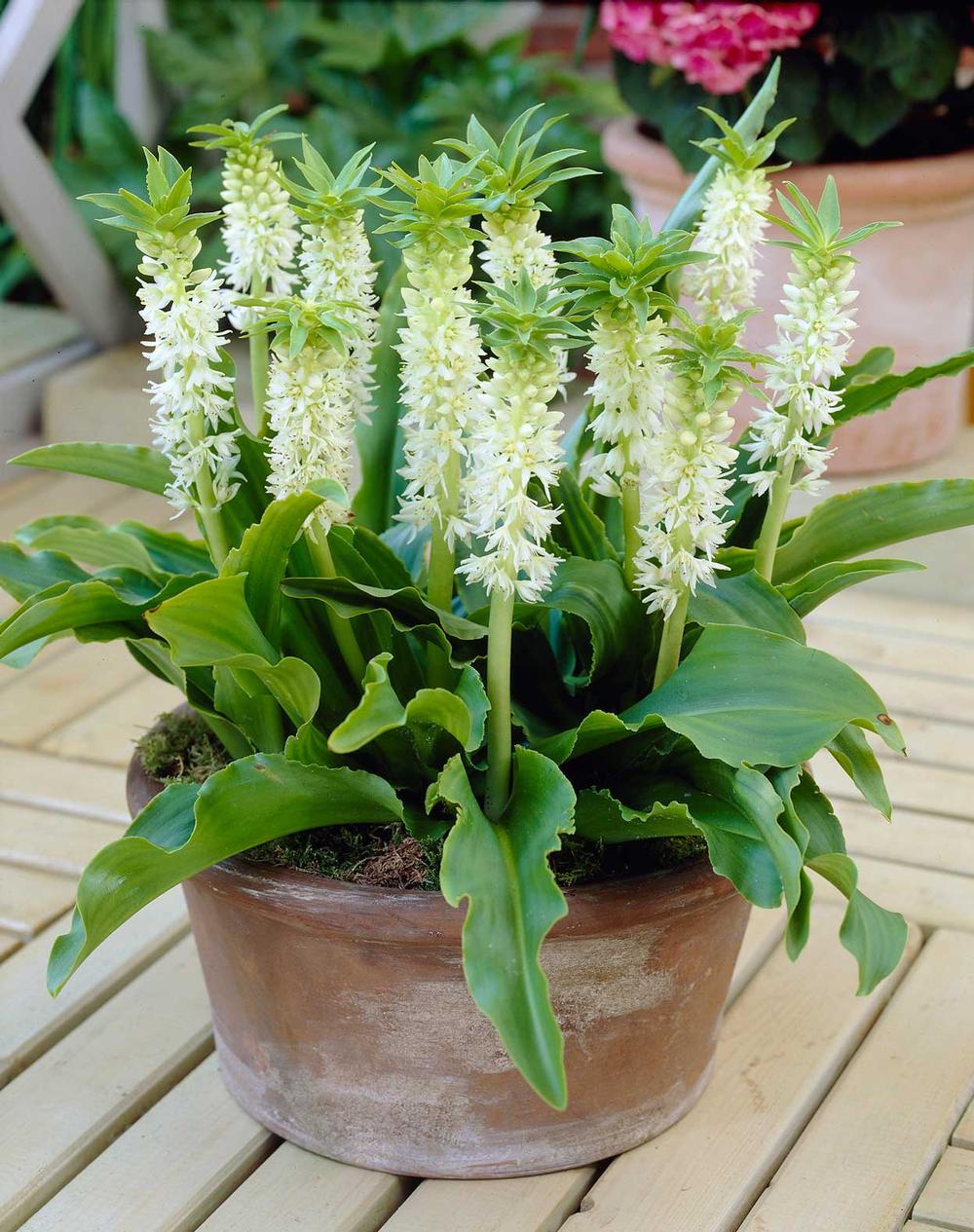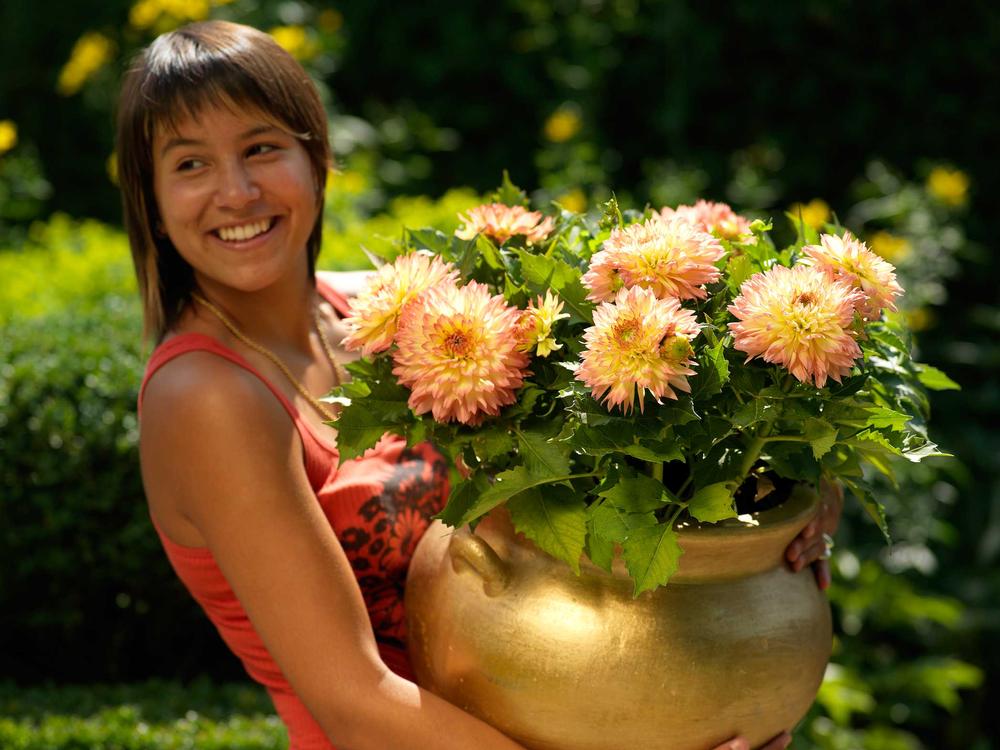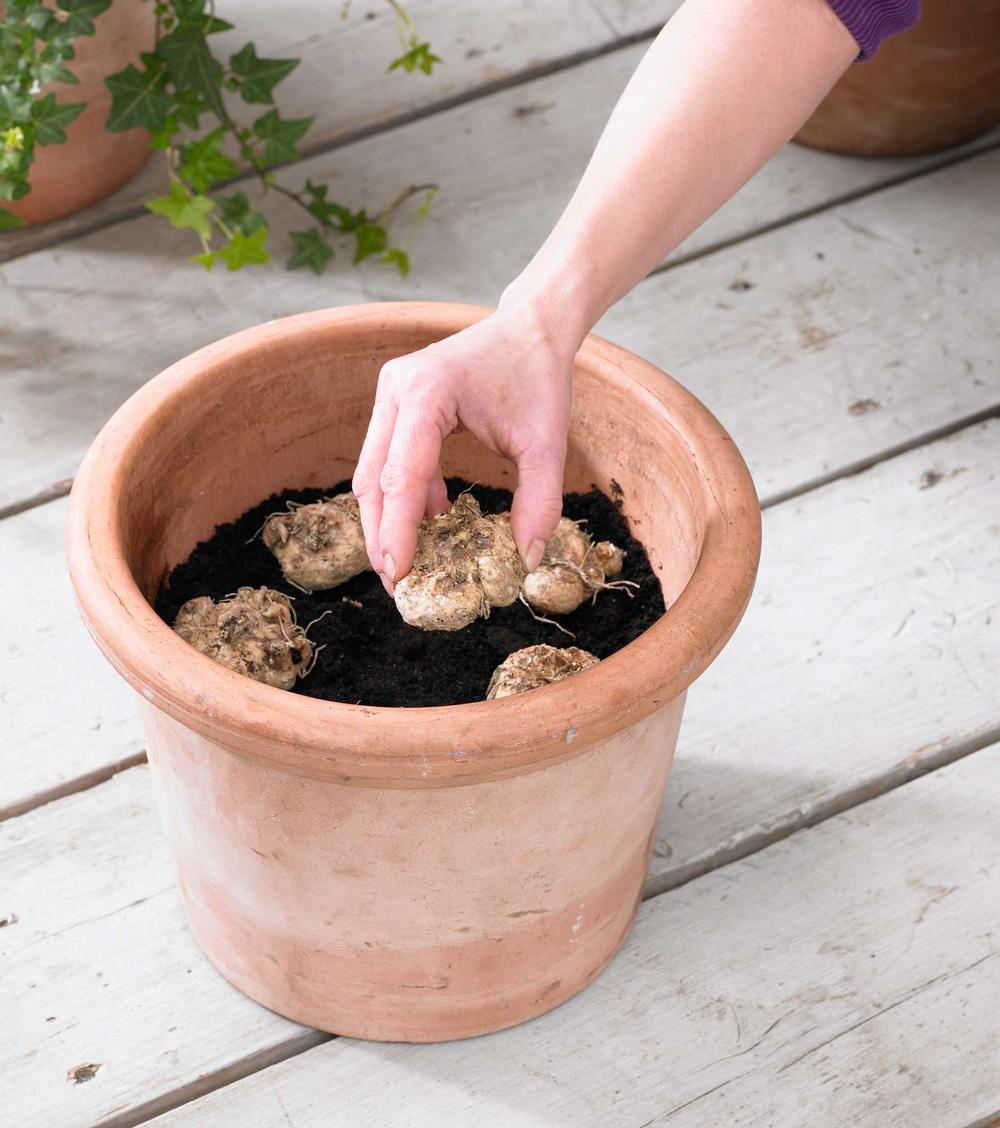Decorate Your Porch and Patio With Colorful Blooms
Dahlias, cannas, tuberous begonias, elephant ears, caladiums and other summer-blooming bulbs are heat loving plants that grow best in warm soil. Growing these plants in containers is a great way to give them the extra warmth they need to put on a spectacular show. Pots and planters also make it easy to enjoy their flowers and decorative foliage almost anywhere around your home.
In this article you'll find tips for choosing the right size and type of containers and suggestions for how to care for your summer bulbs during the growing season.

Choosing Plants for Sun and Shade
Some summer bulbs grow best in full sun, while others prefer partial shade. Sun lovers should receive at least 8 hours of direct sunlight each day. In most cases, all day sun is ideal, though in hot climates your plants will appreciate a little afternoon shade. Choose from the following bulbs for a sunny location:
- Canna lilies
- Elephant ears
- Lilies
- Calla lilies
- Caladiums (sun tolerant)
- Dahlias
- Gladiolus
- Eucomis
- Acidanthera
- Nerine
- Brodiaea
- Tigridia
- Ranunculus
Bulbs that prefer partial shade still need 4 to 6 hours of sunlight per day. Morning light is preferrable to hot, afternoon sun. The filtered light on a covered porch or beneath a tall shade tree may be enough to keep these plants happy. If you find the foliage looks weak and the plants are not flowering well, they probably need more light.

When to Plant Summer Bulbs
Summer bulbs are frost sensitive and dislike cold soil, so don't plant them outdoors until overnight temperatures are relatively warm and settled (60°F or warmer). If you want to give the plants a head start, the bulbs can be planted earlier, but the containers should be kept in a sunny, protected location such as a greenhouse, sunroom or enclosed porch.
At the start of the growing season, summer bulbs may lag behind most annuals and perennials, but these bulbs contain a reserve of stored energy, and once they get started, they grow quickly. One of the best things about summer bulbs, is how well they perform in late summer and fall when other plants have passed their prime.

How to Choose the Right Size Pot or Planter
Containers come in all sizes and so do summer-blooming bulbs. When choosing a pot, it's important to think about the mature size of the plant. As a general rule, the pot should be 1/3 to 1/2 as big as the plant -- when it's fully grown.
The chart below lists each type of bulb and the minimum pot size for a given number of bulbs. This is intended as a guide, so you can you figure out how much space the bulbs require. Using a generously-sized container will give the plants more room to develop and help them reach their full potential. Larger pots also hold more soil and more moisture, so you won’t need to water as often.
Outdoor pots and planters need to have drainage holes on the bottom so excess water can drain out. This is especially important for bulbs, because they can rot in soggy soil. Set large pots on bricks or "pot feet" so water can easily drain away.
If you are planting full size dahlias, glads or lilies in containers, these plants will need support to keep the stems straight and the flowers upright. When choosing a pot, make sure it is deep enough for stakes or a metal plant support. Even with support, it's best to put these plants where they'll be protected from strong winds.

Tips for Watering and Fertilizing
For best results, fill your containers with a high quality soilless growing mix. Blends that contain peat moss, vermiculite or perlite are best because they drain well and resist compaction. This is very important for containers, because frequent overhead watering compacts the soil. If you wish, you can add finished compost (up to 20% of the mix) to improve the soil's water-holding capacity and provide some nutrients.
In hot, sunny weather, plants in containers may need to be watered every day. Take some extra time at least once a week, to water slowly and make sure the entire root ball gets thoroughly soaked. In rainy climates, avoid using saucers under the pots and consider raising them on bricks or pot feet to encourage good drainage.
Summer-blooming bulbs are high-energy plants. Fertilizing them every 2 to 3 weeks throughout the growing season will help sustain rapid growth and encourage abundant flowering. Use a liquid all-purpose fertilizer and/or a granular sustained release fertilizer and follow package directions.
To shop all our summer bulbs for containers, click HERE.


